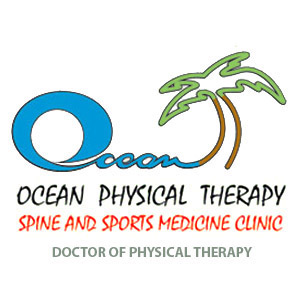
HOT TOPICS
Physical Therapy's Effects Equal to Surgery for Spinal Stenosis Symptoms
Runner's Knee
Joint Replacements
Hip Osteoarthritis
Shoulder Pain
Physical Therapy Determined Most Effective Option to Relieve the "Pain in Your Neck"
| Banishing Back Pain - Preventing work-related injuries can mean simple body mechanics...READ |
| Anterior Cruciate Ligament Reconstruction: - Surgical Management and Postoperative Rehabilitation Considerations ...READ |
| Therapeutic Light - Light is a form of energy that behaves like a wave and also as a stream of particles called photons. ...READ |
| Stopping Pain - The knee is the largest and most complicated joint in the body ...READ |
| Physical Therapy Plays a Vital Role - The unsung heroes for millions ...READ |
| Pain In The Neck - Neck sprains and strains are among the most frequently reported injuries in auto insurance claims ...READ |
| Core Power - As a child, I remember watching my father give a boxing lesson ...READ |
| Back to Basics - The Mechanics of a Proper Lift: Injury Prevention 101!...READ |
| The Way to Stay Fit After Thirty - Here's why walking is such an anti-aging elixir...READ |
| The New Way to Beat Back Pain Surprising info on what causes the ache -
and how to make it stop...READ |
| A Running Start - A recipe for those who want to have a training edge...READ |
Alternative Medicine
Surgical Management and Postoperative Rehabilitation Considerations- ...READ |
| Stressed Out - Elbows and wrists are the joints of finesse, not force ...READ |
| In a Pinch - The majority of sports couldn't be played without using the most mobile joint in the body & the shoulder ...READ |
|
| A Running Start - Vincent M. Burke, Bs, MPT, CSCS, *DPT |
Most people run for pleasure, or for an occasional weekend pastime. Others take running to a competitive level. For those who want to have a training edge, to improve their "K" time, and prevent injuries, I offer one of my athletic performance recipes. If you train outdoors and run on the side of the road, you can apply my theory to your running session and watch your level running time greatly improve.
All roads are built with a pitch that can be used as a training advantage. The apex (middle) of a road is the highest, and the edges (curb side) are lower, making the road an uneven terrain. If this were not true, you would not see flowing water on the sides of the road when it rains. The curb side of the road has a pitch (like the roof of a house) of a bout 2 to 5 degrees different from the apex, causing "unbalanced" runs.
When you are road running along the curb, the outside foot is lower than the inside foot, giving a leg length discrepancy of a ¼ to ½ inch. As for the foot position, it gives a 2-5 degree lateral tilt on the outside foot (curb side), both causing adverse ligament stress and muscle strain on the foot/ankle complex.
Aside from the foot, we cannot forget the entire body above the foot. When the foot hits the ground, there is a ground force reaction that goes through the knee, hip, and back that is five to seven times the body weight depending on the stride length and speed. Also, runners who use orthotics with a medial post and/or an arch support give the orthotics a "none therapeutic" effect, causing more harm than good.
We cannot change the terrain of the road, but we can change the way in which we run on it to give us the edge in our training and preventing injuries. Aside from changing the running path daily and your footwear every 500 miles, I recommend "zig-zag" running (running forward in a serpentine fashion from one side of the street to the other). Running this way trains you multi-planar (saggital and transitional) for endurance, strength and power of the primary running muscle group (gluteus medius and maximus), which I consider the most important muscle for running.
Also, running in this fashion does not allow for adaptation, which is the key to improving athletic performance because the body is always changing position, resistance, direction and terrain, and mostly limits continued stress that cause overuse syndromes.
Whenever one runs in a vector fashion such as "zig-zag" running, the straight-ahead performance improves. This type of vector training works on acceleration (running up the incline toward the apex of the road), followed by deceleration (running back down toward the curb), and finally changing directions by pivoting on the foot and activating the pelvic, knee and ankle eccentric stabilizers. This type of running also avoids overuse syndromes, because every stride and foot contact step is different for the body and foot position.
I have trained this way and my straight-forward time has greatly improved. I also feel less ache and tightness in my joints and muscles, giving me a more balanced, challenging fun and purposeful run. It also allows runners to run in a shorter area because they can cover more terrain on the road, four blocks can easily become one mile of running depending how long of a "zig-zag" is made. As runners approach their K runs, they can make their "zig-zag" runs go longer.
Source: The Nation's Physical Therapy Newsmagazine "Advance for Physical Therapists and PT Assistants" April 10, 2006 Vol. 17, Issue 9, Page 11 |